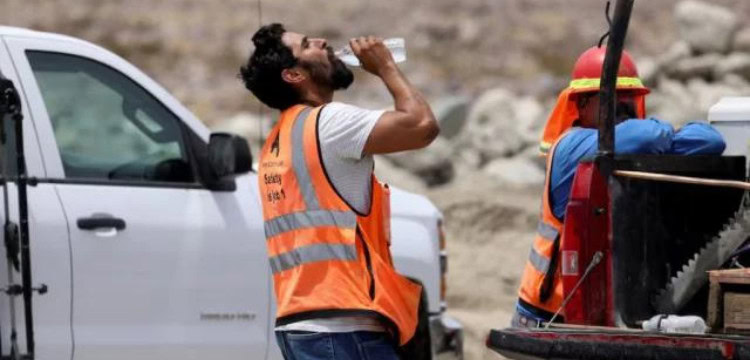A prolonged heat wave that has broken previous records across the U.S. continued on Sunday, causing dangerously high temperatures in the West and extreme heat and humidity in the East.
An excessive heat warning, the highest alert from the National Weather Service (NWS), affected about 36 million people, roughly 10% of the population, according to NWS meteorologist Bryan Jackson. Numerous locations in the West and Pacific Northwest matched or surpassed previous heat records.
Read more: How to Stay Cool During Heatwaves?
In Northern California, many areas exceeded 110 degrees, with Redding reaching a record 119 degrees. Phoenix set a new daily record on Sunday for the warmest low temperature, not dropping below 92 degrees.
Death Valley National Park in eastern California recorded a high of 129 degrees on Saturday and Sunday. Tragically, a motorcyclist died from heat exposure, and another was hospitalized. The victims were part of a group of six motorcyclists in the Badwater Basin area during the extreme heat. Emergency helicopters couldn’t respond due to the high temperatures, which generally prevent safe flight over 120 degrees.
Park Superintendent Mike Reynolds advised visitors to be cautious and limit outdoor activities during the extreme heat. Death Valley has experienced temperatures of 125 degrees or higher daily since July 4, with the trend expected to continue through Saturday.
Officials emphasized that heat illness can accumulate over days, and riding a motorcycle in such conditions is particularly risky due to the heavy safety gear needed.
Despite the heat, some visitors like Chris Kinsel saw the extreme temperatures as an exciting experience. He and his wife visited from Las Vegas, planning to take a photo next to the park’s digital temperature sign.
In Nevada, Natasha Ivory took her children to a water park in Mount Charleston, which recorded a high of 120 degrees on Sunday. Las Vegas reached an all-time high of 120 degrees as well, with temperatures exceeding 110 degrees for five consecutive days.
In Oregon, triple-digit temperatures were common, with Salem hitting 103 degrees, breaking a record from 1960. The East Coast also experienced temperatures above 100 degrees, although no excessive heat advisories were issued.
The NWS advised residents to stay hydrated, avoid the sun, and check on vulnerable individuals. They also highlighted the rarity of heat advisories extending into higher elevations, such as around Lake Tahoe, where temperatures are not expected to drop below 100 degrees until the following weekend.
Extreme highs, including possibly 130 degrees, are forecasted for Furnace Creek, California, in Death Valley. The highest temperature ever recorded on Earth was 134 degrees in July 1913 in Death Valley, although some experts believe the true record is 130 degrees from July 2021.
In Arizona’s Maricopa County, there have been at least 13 confirmed heat-related deaths this year, with over 160 other suspected cases under investigation. This does not include the recent death of a 10-year-old boy in Phoenix from a heat-related medical event while hiking.
June marked the twelfth consecutive month with global average temperatures at least 1.5 degrees Celsius above pre-industrial levels, according to Copernicus, the European Union’s climate monitoring service. This year’s June was the hottest on record, continuing a streak of record-breaking months due to climate change and the natural El Niño phenomenon.
Scientists warn that the world is approaching critical thresholds, with ecosystems potentially reaching tipping points beyond recovery as global temperatures rise. The Paris Agreement aims to limit global warming to 2 degrees Celsius, preferably 1.5 degrees, but successive months of high temperatures indicate the world is nearing these dangerous levels.









